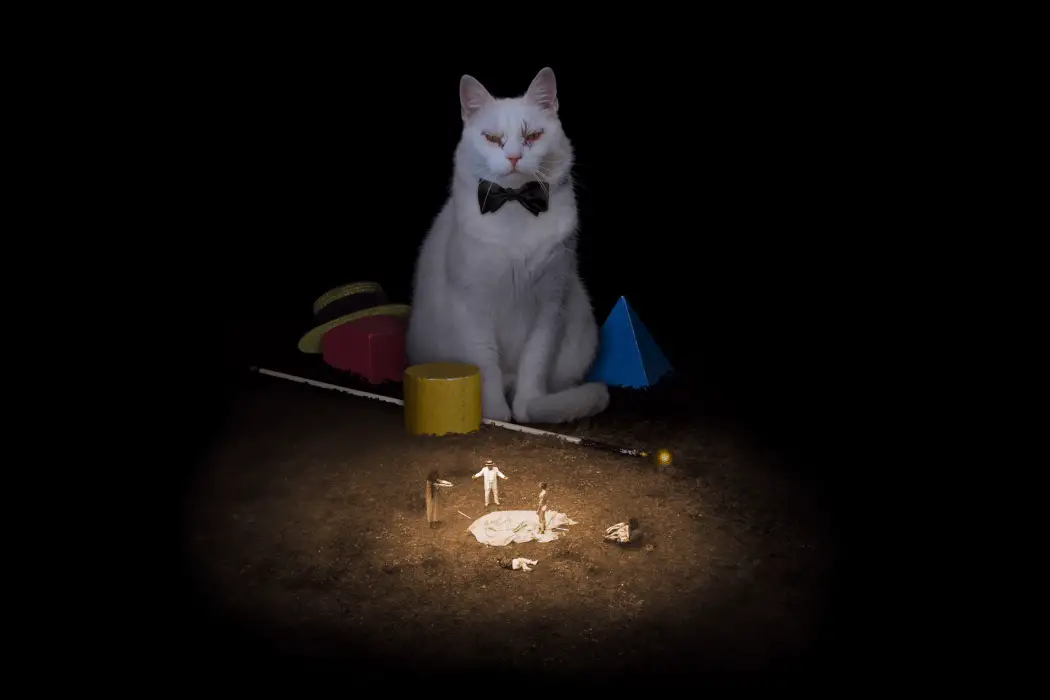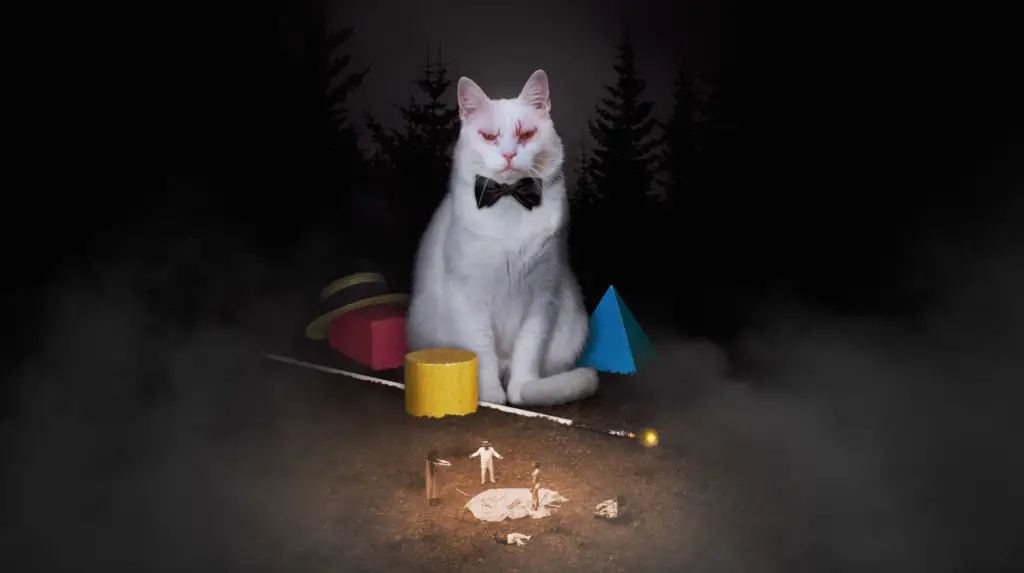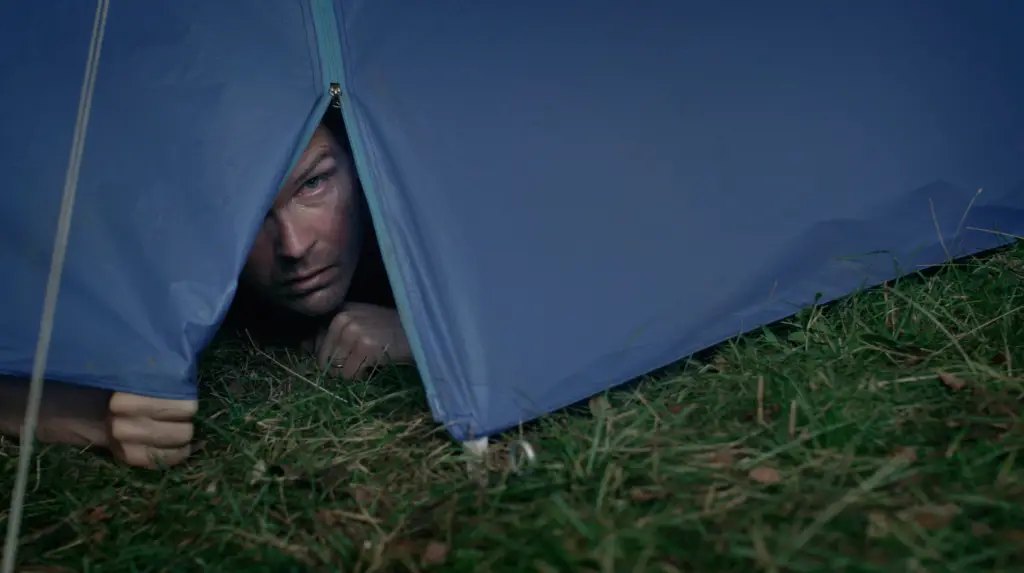Fantastic Fest 2019: KOKO-DI KOKO-DA

Caitlin's lifelong love of films began with being shown "Rosemary's…
Koko-di, Koko-da gives the same first impression as the moment you discovered that your favorite fairytales had truly horrifying origins. Buried within this sinister fable is an exploration of grief in its most raw form and an elegant illustration of the journey of healing after tragedy and re-establishing intimacy. Much like Midsommar earlier this year, Koko-di, Koko-da is a brutal examination of relationships peering out from behind a creepily cheery mask.
When husband and wife, Tobias and Elin, go on a camping trip in the hopes of reconnecting after the tragic death of their daughter they are met with their greatest challenge yet. They are being stalked by a band of mischievous and malevolent characters that are seemingly the illustrations on their late daughter’s music box come to life. Night after night, they are tormented and fall victim to this band of misfits and the psychological terror they bring.
Koko-di, Koko-da is directed by Johannes Nyholm and stars Peter Belli, Leif Edulund, Ylva Gallon, Katarina Jackobson, and Brandy Litmanen.
The film has enjoyed appearances and accolades at a host of popular film festivals, as an official selection at the following: the Sundance Film Festival, Rotterdam Film Festival, Seattle Film Festival, Karlovy VaryFilm Festival, Fantasia Film Festival (where it won the AQCC- Camera Lucida Prize), and Fantastic Fest 2019, the largest genre film festival in the country.
Beautifully Constructed, Horrifically Effective
There is a childish and dreamlike quality to the film that creates the most beautiful tension when paired with its incredible brutality. The best way to summarize the emotion is by tapping into whatever it is that makes kids in horror films feel so creepy. Our band of misfit tormenters first appear, subtly, in the films opening scenes, rosy-cheeked and cartoonishly cheerful on a child’s music box. When we see them again, brought to life and with wicked intent, they are a dark shade of themselves.
Warm smiles become sinister grins, a happy skip becomes a death march, and the playful puppy gives way to a very hungry pit bull. Acts of unthinkable horror and the most disturbing moments of the film are carried out with glee and that makes the nightmare even more terrifying. Koko-di, Koko-da delights in the uncomfortable and every aspect of the film is crafted with the intention of making the viewer squirm. Even the setting of the misty, wooded clearing presents the film as a twisted fairytale.

A highlight of the piece is its sporadic use of shadow puppetry to convey the next “chapter” of the fable and give us an outside look of what the couple is going through. The sequences are equal parts charming and heartbreaking and incredibly on tone with the overarching theme of being trapped in a children’s story. On a strictly cinematic note, the scenes are beautifully composed and are the cherry on top of an overall gorgeous film.
And, truly, the film is gorgeous. In particular, the use of the forest in all of its ethereal beauty makes every shot feel like a vignette from a dream. The setting only allows the troupe of demented music box characters pop and the designs on these characters are imaginative and more disconcerting than playing straight to horror. It’s also fun to see the repeated use of particular angles and shots to show how time is repeating itself over and over. Beautifully constructed and very well done.
Koko-di, Koko-da: Fable of Fright
Of course, Koko-di, Koko-da is so much more than just a pretty face and good bones. The film spins a sophisticated and nuanced yarn, exploring profound loss and the challenge of re-establishing intimacy in the face of tragedy. The element of the story being told as a fable may bring a youthful lightness to the piece, but the themes in discussion are dead serious.

Our husband and wife duo are brought into this space by shared trauma, the loss of their child. Their marriage is on the ropes, the intimacy is shattered, and the love and affection they share for each other are slowly bleeding out. The distance they travel and the isolation of their campground are a cry for help, as the distance and isolation grow between them.
Every night is the same way, Elin leaves the tent to use the restroom and is attacked by the misfits. Try as Tobias may, he is helpless and his fate is sealed every single night. Unlike other films that follow this formula, Groundhog Day as an example, the characters do not get smarter or more capable of preparing for what’s coming. Rather, the dread becomes more palpable and Tobias becomes more frantic. Something is wrong, he just doesn’t know what.
A point of frustration in the film is that, for many nights, Tobias makes no attempts to save his wife. Even as the attacks leveled by her tormenters become more severe (seriously, some of the most graphic and disturbing images in recent memory can be found in this film), Tobias cowers in the safety of the tent or tries to make an escape. He never comes to the aid of his wife.

Slowly, over several nights of terror, the couple becomes closer. Tobias suggests that she stay in the safety of the tent. He tries to drag her along to safety. The connection slowly beings to reestablish, both in superficial and shallow ways like the desire for sex but also in actual care and the understanding that they must work as a team to defeat the evil that has come for them.
In the final moments of the film, it seems that Tobias and Elin are in the clear. They race down the road, sure of their escape, until a surprise they could not have predicted ends with their car in a ditch and the guarantee of death. The couple holds each other, though they’re not sure why.
The Moral of the Story
Koko-di, Koko-da is a stunning allegory for the daily struggle of those surviving grief, as a couple. The hardships do not go away and sometimes there is no fighting off these feelings. At times one may be helpless, but through commitment and understanding healing can happen. And even when things are going well, there is still a possibility for setback and it’s important that we cling to each other in those trying times.
The film ends with the image of Tobias and Elin’s daughter, cranking out the tune on the music box. Resetting the cycle and reminding us of why we’re here. For such a twisted film that freefalls through so many complex themes, you could not create a more perfect ending of the cycle of trauma and the tune that plays on.
Koko-di, Koko-da is a surprising triumph! A modern fable brilliantly told and performed to expert precision. While some themes are a bit on the nose, audiences are taken on such a ride that one can’t help but be swept away. Don’t sleep on this one (and watch out for what lurks in the woods)!
What fairytale frightens you? Let us know in the comments!
Watch Koko-di, Koko-da
Does content like this matter to you?
Become a Member and support film journalism. Unlock access to all of Film Inquiry`s great articles. Join a community of like-minded readers who are passionate about cinema - get access to our private members Network, give back to independent filmmakers, and more.
Caitlin's lifelong love of films began with being shown "Rosemary's Baby" at way too young an age. She has been an online content creator since 2014, across a wide array of outlets and subjects. Described as "amazingly and beautifully ruthless," Caitlin resides in Austin, TX and her love of writing on film is only matched by her appreciation for good bourbon and the works of John Carpenter.












